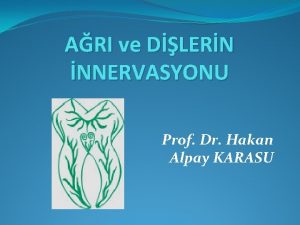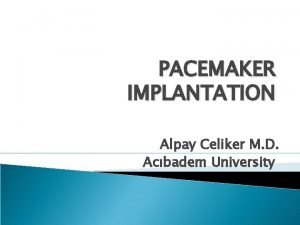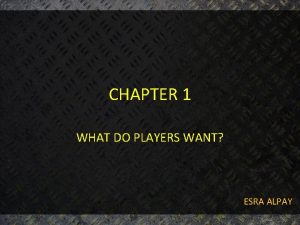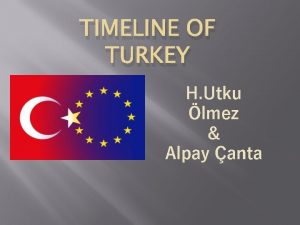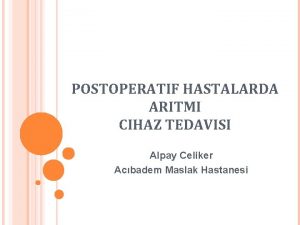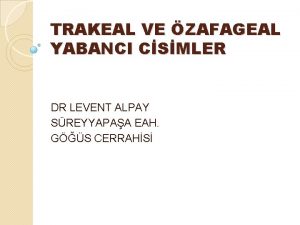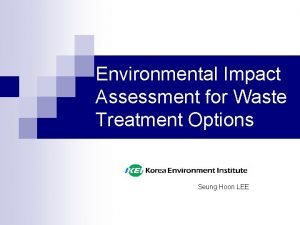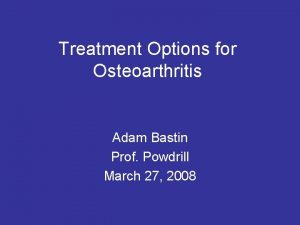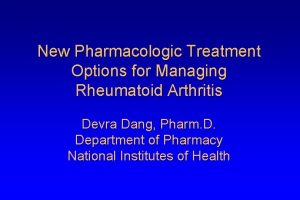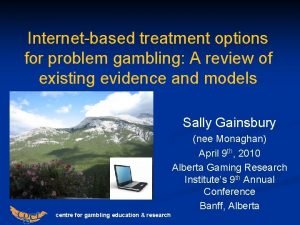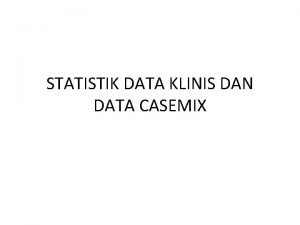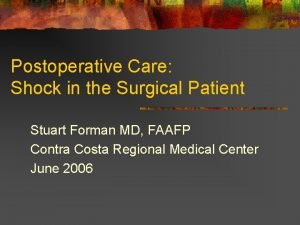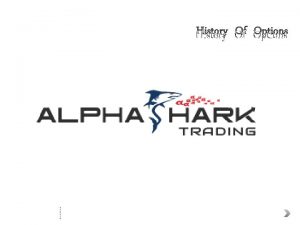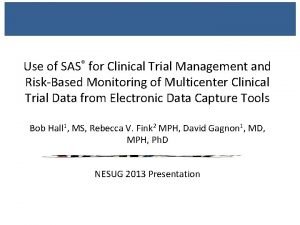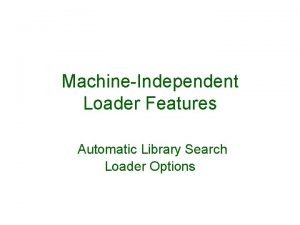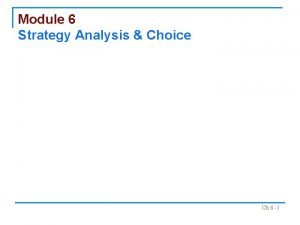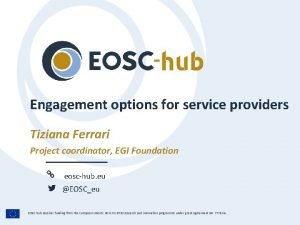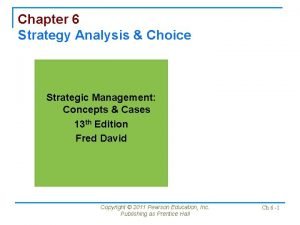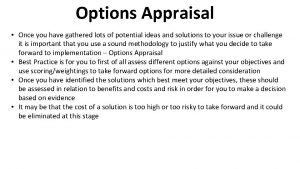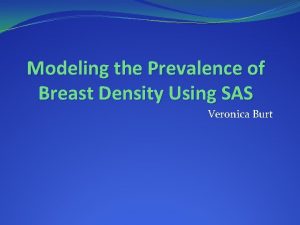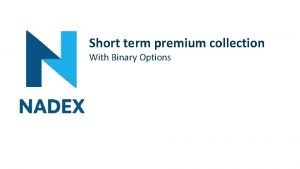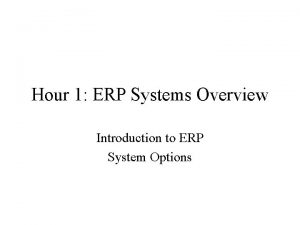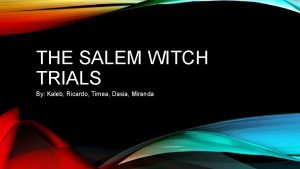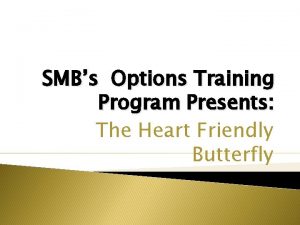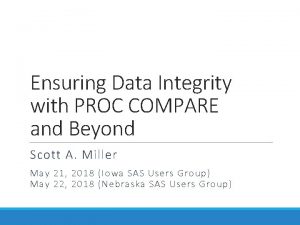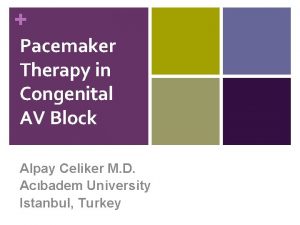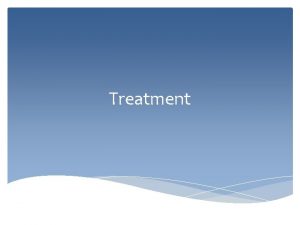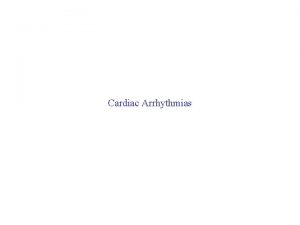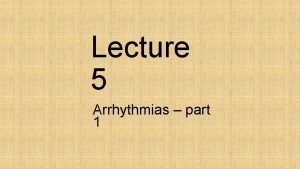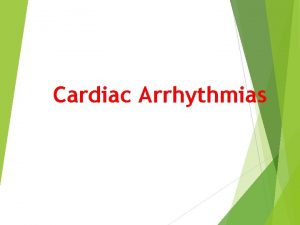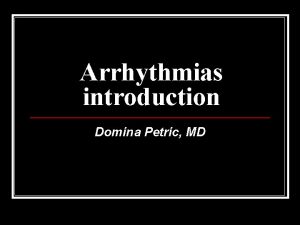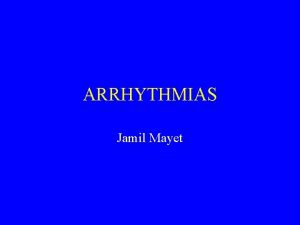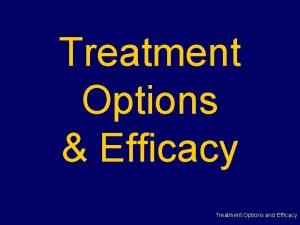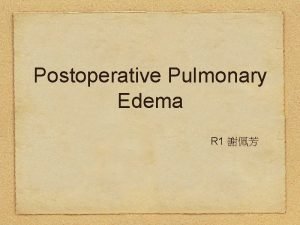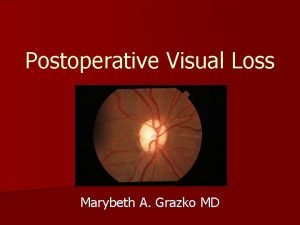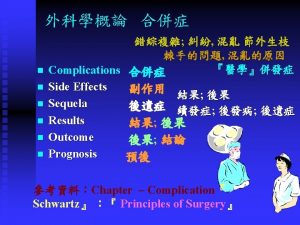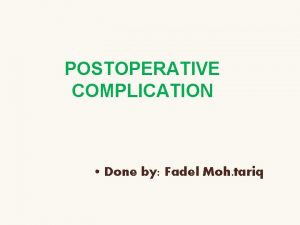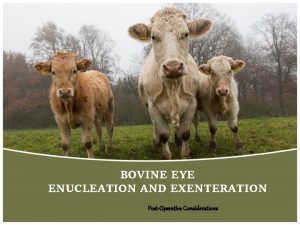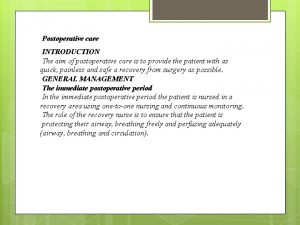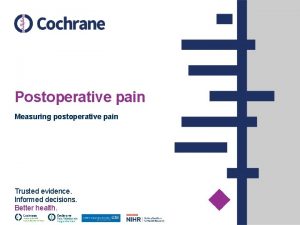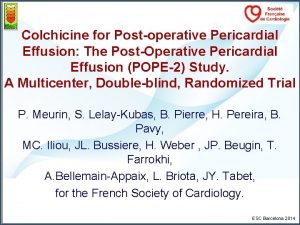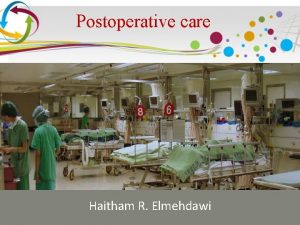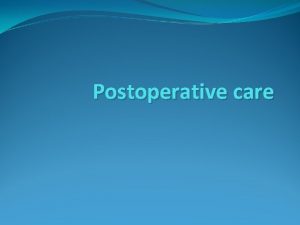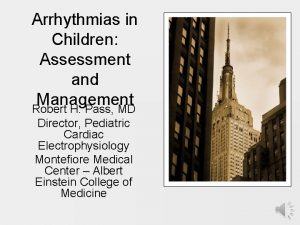Postoperative arrhythmias Treatment options in children Alpay Celiker

































- Slides: 33

Postoperative arrhythmias: Treatment options in children Alpay Celiker M. D. Professor of Pediatric Cardiology Acıbadem University, Istanbul, Turkey


Congenital Heart Defects in Newborn 8% Cardiac Operation 60 % Possibility to reach adulthood 85%

Major Issues in ACHD n Primary Operation or intervention n Reoperation or reintervention n Heart Failure n n Sudden Death

Kaemmerer H et al.

Conditions with Specific Interest n Repaired tetralogy of Fallot n Atrial switch procedures n Fontan circulation

Cardiac Surgery&Arrhythmias n Corrected tetralogy of Fallot – Atrial arrhythmias – Ventricular arrhythmias n Atrial switch for D-TGA – Atrial arrhythmias – Sick sinus syndrome n Fontan circulation – Atrial arrhythmias – Sick sinus syndrome

Case 1 n 11 years old boy suddenly collapsed with a ventricular tachycardia

n n n n DC cardioversion by paramedics Restoration of normal sinus rhythm History: Total correction for FT at 1 month old ECG: RBBB, QRS= 130 msn ECHO: Mild PR, normal LV function MRI: Normal RV EF, mild PR

Cardiac Cath and Electrophysiologic Study n Normal hemodynamic findings n Mild PR n Normal AV and sinus node function n No inducible SVT n Ventricular stimulation: – VT induction with two PES • Monomorphic VT with LBBB • Rate 270 beats/min

n Oral amiodarone 10 mg/kg, propranolol 1 mg/kg started n EPS after ten days VT ICD How we can know the risk before? ? Noninvasive methods Invasive methods

Total Correction and Arrhythmias n Ventricular arrhythmias – Late operationLong follow-up duration – Residual VSD – Severe Pulmonary regurgitation n Atrial arrhythmias n Sinus node and AV conduction disorders

MRI Right ventricle size n Right ventricle ejection fraction n Degree of PR n Late enhancement with Gadolinium n

Hacettepe Series: 46 patients Study Design Postop FT History Resuscitation in one Syncope in five Palpitation in 12 significant PR, TR right ventricular dysfunction residuel lesions MRI Hemodynamic study Electrophysiological study

Electrophysiological Findings Normal Sustained AF+fibroflutter Patient Number % 15 35 8 18, 6 Non-sustained AF 3 6, 9 SSS and AV conduction problem 8 18, 6 Non-sustained VT 5 11, 6 Sustained VT* 4 9, 3 Total 43 100

n Atrial Case 2. switch at two years of age n TV replacement at 10 years of age n Sinus bradycardia n Syncope n Holter; Nonsustained wide QRS tachycardia n Electrophysiologic study

Programmed ventricular stimulation

VF and DC Shock

n Atrial flutter – AA treatment, catheter ablation, antitachycardia pacemaker n Sick sinus syndrome – Brady pacing Mustard Senning Procedures

Fontan Circulation

Fontan & Arrhythmia n SSS or AV Block – Epicardial pacing – Pacing from coronary sinus n IART or atrial flutter – DC cardioversion – AA drug therapy – Catheter ablation with 3 D mapping – Arrhythmia surgery

Case 3 n 23 year old male student suddenly collapsed n Ventricular fibrillation Defibrillated several times n Brain edema resolved in the following days n History: – Total correction for FT at 3 years old – Transannular patch, previous shunt – QRS 180 ms

Cardiac cath & Electrophysiology n It was performed 5 years ago n No RVOT gradient, normal PA pressure n Aneursymal dilation at RVOT n Severe PR & moderate TR n Enlarged RV n EPS: NS Atrial Flutter, NO NSVT OR SMVT


Noninvazive and invazive tests n Noninvazive – – – QRS duration: > 180 ms QT dispertion SAECG: Abnormal Holter monitorisation: SMVT Exercise testing n Invazive – Cardiac Electrophysiologic study

Indications for Invasive Evaluation Syncope of unknown origin n Resusciated sudden cardiac arrest n Ventricular tachycardia on Holter ECG n Exercise induced/aggrevated ventricular tachycardia/arrhythmia n During invasive cardiac catheterisation n Drug-electrophysiologic study n

Intervention n Hemodynamic study and angiocardiography Diagnostic electrophysiologic study Interventional treatment (Stents, PVR’s) n Interventional electrophysiology n Pacemaker-defibrillator implantation

Mapping with Ensite Velocity

Conclusion n Arrhytmia is a common problem in patients with operated CHD n Atrial tachycardia is more frequent in patients with Senning/Mustard and Fontan surgery. n Interventional and surgical approach are needed in patients with residual/recurrent lesions.

Conclusion II Serious arrhythmias may occur in patients without residual cardiac lesions. n Cardiac electrophysiologic study should be done symptomatic patients. n 3 D mapping and new ablation methods should be used in the treatment of patients with tachycardia. n


Treatment Options Symptoms & frequency Arrhythmia Type Age of patient AA treatment results ABLATION AAD DEVICE INTERVENTION Complication Risk Arrhythmic sudden death risk CHD Type & Hemodynamic Status

 N palatinus majus
N palatinus majus Acbadem
Acbadem Cumhur celiker
Cumhur celiker Esra alpay
Esra alpay Alpay çanta
Alpay çanta Arza alpay
Arza alpay Dr levent alpay
Dr levent alpay Description of waste
Description of waste Http://opn.to/a/qmyfg
Http://opn.to/a/qmyfg Treatment options
Treatment options Treatment options
Treatment options Bespoke treatment options
Bespoke treatment options Nursing diagnosis for cataracts
Nursing diagnosis for cataracts Data klinis adalah
Data klinis adalah Post operative nursing care
Post operative nursing care Postoperative shock
Postoperative shock History of options
History of options Gdn targeting options
Gdn targeting options Sas ods tagsets.excelxp options
Sas ods tagsets.excelxp options Explain machine independent loader features in details
Explain machine independent loader features in details Analysing the 6 strategic options megxit
Analysing the 6 strategic options megxit Eosc
Eosc Underline the correct option
Underline the correct option Smart multiple options
Smart multiple options Analysing the 6 strategic options megxit
Analysing the 6 strategic options megxit Hedging credit risk with options
Hedging credit risk with options Option appraisal meaning
Option appraisal meaning Options nofmterr
Options nofmterr Nadex short term contracts
Nadex short term contracts Introduction to erp systems
Introduction to erp systems Trading strategies involving options
Trading strategies involving options What options did an accused witch have in salem?
What options did an accused witch have in salem? Iron butterfly options adjustments
Iron butterfly options adjustments Proc compare
Proc compare
